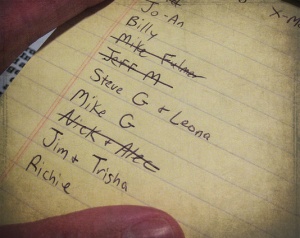Making Your List, Checking It Twice
If you use an e-mail service to send newsletters or blasts, how did you build your list? If the answer is that you invited people or they added themselves via a form on your website, three cheers for you! No coal in your Christmas stocking.
Email is still one of the most powerful ways to connect with customers or prospects short of having coffee together, even when automated (because you can personalize it). You’re not competing with a stream of cat photos in Facebook or random Twitter chatter. It’s a great way to further your brand and personality, and become a go-to person in your field.
But you don’t want people scratching their heads when your third e-blast of the week arrives in their in-box, wondering if they forgot they signed up for your list.
There are three types of emails from businesses: total spam, almost spam and not spam. If you invited people to your list or they signed up (knowing what they were getting), that’s not spam.
We all know what total spam is.
Almost spam is everything else, such as adding people to your list, even people you know, even good friends, who might very well have said, “Yes, sign me up Scottie!” if only you’d asked.
Perish the thought that deleting your email is easy. Trust and respect rule here. The burden is not on your recipient, it’s on you to inform, inspire and delight. I even ask permission from clients, people who pay for my advice.
The only good method is a double-opt-in. Better to have a few true believers than the many annoyed because you didn’t seek permission. That’s why they call it permission marketing. I’m not even sure how I got onto lists I didn’t sign up for because most e-mail services have a built-in, double-opt-in set up, such as Mail Chimp’s or Aweber’s.
While I don’t get as giddy about your e-newsletter as I do when the Sunday New York Times lands on my front stoop, it’s still intimate, contained and gentle. But even the most scintillating e-newsletter is stuff in your inbox that must be tended to, which is why it’s bad for business to send them too often, lacking in good content or to people who didn’t sign up, or a combination of all three. (The occasional e-mail sent from your personal address to alert people about an event is forgiven.)
I’m of the mind that everyone has good advice to give if they’ve worked in their field long enough, which is why I’m not in favor of purely self-promotional e-newsletters. I give them a pass though, even those I never signed up for, if they’re infrequent enough, such as quarterly.
Can I add all my Facebook subscribers? Heavens no.
What about my mother? Ask first.
My best friend? See above.
When in doubt, err on the side of caution. Always disclose what someone is getting into. Having an event with a sign-up sheet? Clearly state they are agreeing to be put on your list. Even then, they should still receive a confirmation email, just in case they were tipsy when they put their name down.
If you plan to use the same list for e-newsletters and e-blasts, let people know what to expect. When I started my e-newsletter (which some people find helpful and you can subscribe to here), I alerted people that I might on occasion use the list for something other than a newsletter. I only did that once, for a phone number change. I even made it cute. Remember, always delight, if you can.
So, ring in the new year with a kinder, gentler list that drives happy customers to your door and doesn’t drive other people away.
For some more sage advice, read Seth Godin’s recent Eight Email Failures.
(Image: David Fulmer / Flickr / Creative Commons)

